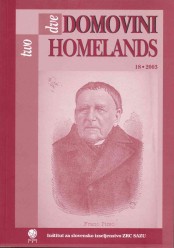EMIGRATION OF SLOVENE INTELLECTUALS TO CROATIA UP TO 1848
Abstract
The article is a survey of the Slovene intellectuals emigrating – from second half of the 17th Century up to 1848 – to Hungary within which Croatia was a separate unit. One of the crucial reasons for the Slovenes to leave their homeland was a severe shortage of schools, either secondary or higher and high schools. Apart from the fact that for many Slovenes, living nearer to Croatian lands, such as those from Lower Steyr, Bela krajina, Haloze, Bizeljsko, Gorjanci, Croatia was the nearest destination, it was also linguistically the closest destination to study.. There they could attend grammary schools, enroled to higher and high schools, after 1874 also to the University of Zagreb. These Slovenes came voluntarily, especially after when successful Illirian movement began in Croatia; others were sent there by the state and church authorities, for example the priests, doctors and, after the reforms of educational system, also teachers and professors. Many Slovenes who have settled there, i.e. emigrated permanently, became honorable members of Croatian society; working there many of them participated a significant contribution to the rise of Croatian national concsiousness, working on the development of Croatian language, literature, or general education. Many of them assimilated, particularly those who created their families there. Although many of them intimately remained Slovenes, yet they worked in accordance with the demands, expectations and interests of the then Croatian society.
Downloads
Downloads
Published
How to Cite
Issue
Section
License

This work is licensed under a Creative Commons Attribution-NonCommercial-NoDerivatives 4.0 International License.
Authors guarantee that the work is their own original creation and does not infringe any statutory or common-law copyright or any proprietary right of any third party. In case of claims by third parties, authors commit their self to defend the interests of the publisher, and shall cover any potential costs.
More in: Submission chapter





